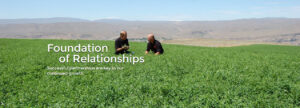
The horse is naturally a grazing animal. As such, horses spend 16 to 18 hours grazing each day. This type of diet is generally high in fiber and low in calories. Current trends in domestic horse keeping, especially for performance horses, include stabling and feeding diets that are low in fiber and high in energy or calories. Unfortunately, when horses cannot graze they often develop stereotypic behavioral problems such as wood chewing or cribbing, stall circling, and weaving. In addition, feeding low forage diets have been linked to gastric ulcer formation in horses.
The ease and convenience of feeding concentrated diets or complete feeds encourages horse owners to continue feeding these type of diets to their horses. But, are these diets really conducive to the well-being of horses? A group in New York decided to test their theory that horses become “roughage hunters” when fed diets that are low in fiber. The main objective of their study was to determine if horses were motivated to search for hay when they were fed a diet low in fiber. They also wanted to determine the effect of diet on horse behavior when horses were fed diets with different levels of fiber.
Diets fed to the horses in the study included free choice orchard grass hay or a commercial complete pelleted feed. The complete feed was offered at 1 – 1.5% of the horse’s body weight. Half of the horses were fed the hay diet first while the remaining horses were fed the pelleted diet first. Horses were trained to use the testing facility where they were conditioned to open the front door of the testing stall by pushing on a metal panel to obtain a food reward.
After training was completed, testing began. Horses were brought into the testing stall twice per week. Testing took 5 minutes to 3 hours, depending on the horse, and the number of times the horse pushed on the panel for a reward was recorded. Rewards were pellets one day and hay the second day. Behavior was assessed when horses were housed in the regular stalls or when they were turned out.
Results showed that horses that were fed pellets were motivated (or pushed the panel more often) to work for hay within the first week of eating the pelleted complete feed, but were not motivated to work for hay when they were being fed hay. These results indicate that horses will seek out long-stem fiber when their diets lack it. However, the researchers also noted that the horses were more motivated to work for a novel diet than to work for the diet that they were currently being fed.
Behavior in the horse’s regular stall was also notably different depending on diet fiber content. When the horses were fed the hay diet, they spent more time eating and chewing compared to horses fed the pelleted diet. Furthermore, horses that were fed the pelleted diet spent more time standing and searching through bedding. More time spent chewing (approximately 10,000 vs. 43,000 times/day in horses fed the pelleted and hay diets, respectively) is significant because not only does this result in better mastication of feed, but it also results in more saliva production. Horses only produce saliva when they chew. Since saliva contains bicarbonate, which acts as a buffer in the gastrointestinal tract when it is swallowed, this may be one reason why the incidence of gastric ulcers is lower in horses fed hay.
These results indicate that behavior is significantly affected by dietary fiber content. Horses are motivated to work for hay when they were being fed a low fiber diet. Therefore, to increase chewing time, saliva production, and improve equine well-being, diets should contain some long stem hay.
To receive this blog from Anderson Hay directly in your email, subscribe above on the right. Please take a moment to complete our survey by clicking the button below.
Reference
Elia, J.B., H.N. Erb, and K.A. Houpt. 2010. Motivation for hay: Effects of a pelleted diet on behavior and physiology of horses. Physiol. Behav. 101:623-627.


